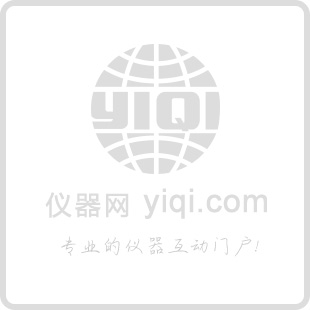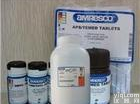通过颜色特征区分尿道致病菌的显色培养基
A chromogenic medium for the presumptive identification and differentiation of all the main micro-organisms that cause urinary tract infections (UTIs).
| Formula | gm/litre |
| Peptone | 15.0 |
| Chromogenic mix | 13.0 |
| Agar | 15.0 |
| Final pH 7.0 ± 0.2 | |
Directions
Suspend 43 grams of Chromogenic UTI Medium in 1 litre of distilled water. Mix well and sterilize by autoclaving at 121°C for 15 minutes. Cool the medium to 50°C and pour into sterile Petri dishes.
Description
Chromogenic UTI Medium (Clear) is a differential agar which provides presumptive identification of the main pathogens which cause infection of the urinary tract. This medium uses the same chromogenic substrates as the existing opaque Chromogenc UTI Medium CM0949 but has a clear background to make multiple sample testing easier.
Chromogenic UTI Medium (Clear) contains two specific chromogenic substrates which are cleaved by enzymes produced by Enterococcus spp., Escherichia coli and coliforms. In addition, it contains tryptophan which indicates tryptophan deaminase activity (TDA), indicating the presence of Proteus spp. It is based on Cystine Lactose Electrolyte Deficient (CLED) Medium which provides a valuable non-inhibitory diagnostic agar for plate culture of other urinary organisms, whilst preventing the swarming of Proteus spp.
The chromogen, X-glucoside, is targeted towards ß-glucosidase enzyme activity, and allows the specific detection of enterococci through the formation of blue colonies.
The other chromogen, Red-Galactoside, is cleaved by the enzyme ß-galactosidase which is produced by Escherichia coli, resulting in pink colonies. Any uncertainty in identification may be resolved by removing suspect colonies from the plate and performing an indole test using Microbact Reagent spot indole DMACA (oxoid order code MB1448).
Cleavage of both the chromogens by members of the coliform group, results in purple colonies.
The medium also contains tryptophan which acts as an indicator of tryptophan deaminase activity (TDA), resulting in halos around the colonies of Proteus, Morganella and Providencia spp.
| Organism | ß-galactosidase | ß-glucosidase | TDA | Colony colour |
| Enterococci | - | + | - | Blue |
| Escherichia coli | + | - | - | Pink |
| Coliforms | + | + | - | Purple |
| Proteus/Morganella
& Providencia spp. | - | - | + | Brown |
| Pseudomonads | - | - | - | Fluoresce |
| Staphylococci | - | - | - | Normal
pigmentation |
It should be noted that organisms with atyptical enzyme patterns may give anomalous reactions. For example, in a trial, over 45% of Enterobacter cloacae were shown to lack ß-glucosidase, resulting in pink colonies which were indistinguishable from Escherichia coli1. In such cases an indole test can be performed using DMACA indole (do not use Kovac’s as the colour of the Escherichia coli colonies may interfere with the red colour of a positive indole test). The test should be performed on filter paper, not directly on the plate. This test will distinguish between Escherichia coli and Enterobacter spp, and also between Proteus mirabilis and other species.
Appearance:
Dehydrated Chromogenic UTI Medium (Clear) is a free-flowing straw -colored powder.
The prepared medium is a straw-colored, transparent agar.
Precautions:
Chromogenic UTI Medium (Clear) should only be used for in vitro diagnostic purposes. Do not use beyond the stated expiry date, or if the product shows any sign of deterioration.
Storage conditions and Shelf life
The dehydrated medium should be stored at 10-30°C and used before the expiry date on the label.
Prepared medium may be stored, out of direct light for up to 2 weeks at 2-8°C.
 显色UTI培养基(Chromogenic UTI Medium)
显色UTI培养基(Chromogenic UTI Medium)
 100份/盒 金黄色葡萄球菌显色培培养基生产
100份/盒 金黄色葡萄球菌显色培培养基生产
 金黄色葡萄球菌显色培培养基
金黄色葡萄球菌显色培培养基
 显色 UTI 培养基(清晰的背景)(CM1050)
显色 UTI 培养基(清晰的背景)(CM1050)
 显色UTI培养基(CM0949)
显色UTI培养基(CM0949)
 显色UTI培养基(CM0949)
显色UTI培养基(CM0949)
 显色 UTI 培养基(清晰的背景)(CM1050)
显色 UTI 培养基(清晰的背景)(CM1050)
 蜡样芽胞杆菌显色培养基 Bacillus cereus Chromogenic Medium 用于蜡样芽胞杆菌快速检测,蜡样芽胞杆菌显蓝绿色
蜡样芽胞杆菌显色培养基 Bacillus cereus Chromogenic Medium 用于蜡样芽胞杆菌快速检测,蜡样芽胞杆菌显蓝绿色
 金黄色葡萄球显色培养基/CAS:/Staphylococcus Chromogenic Medium
金黄色葡萄球显色培养基/CAS:/Staphylococcus Chromogenic Medium
 细菌总数显色培养基 Total Genes Chromogenic Medium 用于细菌总数测定,24h内出结果,细菌呈红色
细菌总数显色培养基 Total Genes Chromogenic Medium 用于细菌总数测定,24h内出结果,细菌呈红色
 尿道定位显色培养基/Urine Orientation Chromogenic Medium
尿道定位显色培养基/Urine Orientation Chromogenic Medium
 坂崎杆菌显色培养基/Enterobacter Sakazakii Chromogenic Medium
坂崎杆菌显色培养基/Enterobacter Sakazakii Chromogenic Medium